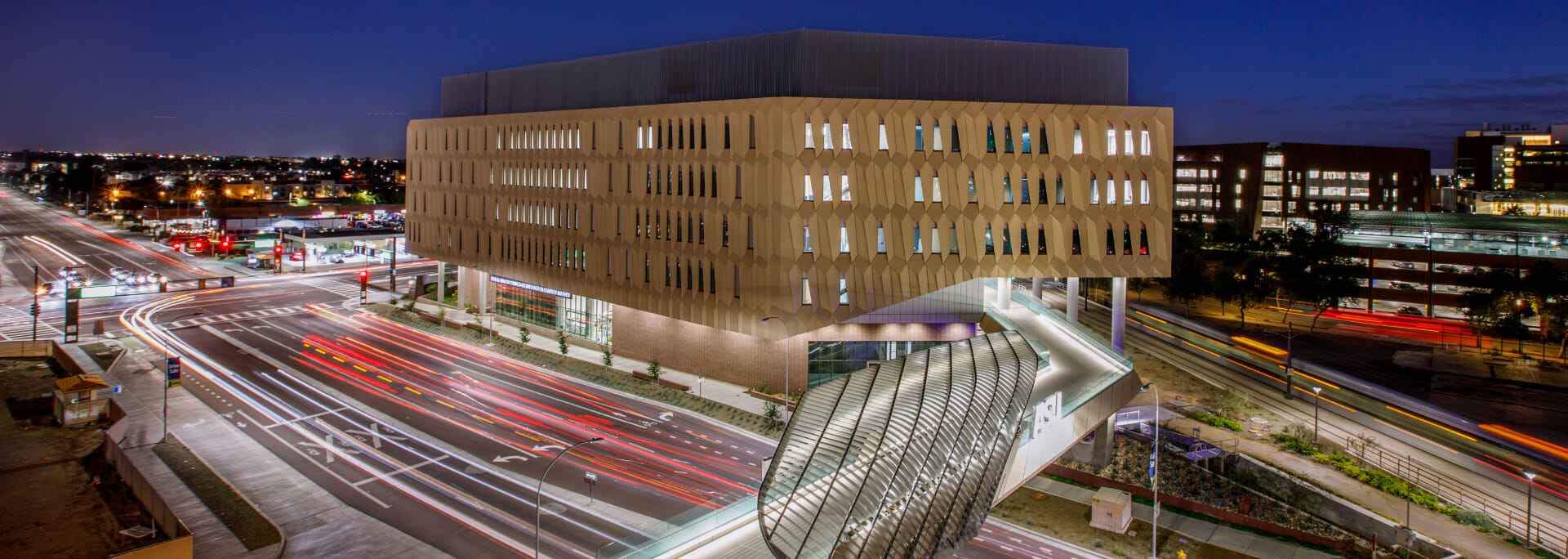
Rob and Melani Walton Center for Planetary Health
The Rob and Melani Walton Center for Planetary Health serves as a new gateway to ASU’s Tempe campus at the southwest corner of University Drive and Rural Road. It opened for operations and classes in January 2022 and was celebrated with a formal dedication on April 18, 2022.
The new high-performance research facility, providing approximately 281,000 square feet of programmable space, fosters an interdisciplinary approach to knowledge generation, collaboration, innovation and leading-edge research focusing on our relationship with our world, from human origins to our global future. The building also includes classrooms and a conference center with a 389-seat presentation hall.
In addition to public outreach and exhibit spaces, the center houses the Julie Ann Wrigley Global Futures Laboratory®, the College of Global Futures and its schools of Sustainability and Ocean Futures, the Global Institute of Sustainability and Innovation, the Rob and Melani Walton Sustainability Solutions Service and the Institute of Human Origins.
The building features more than 70,000 square feet dedicated to research labs for biological sciences, engineering, life sciences and sustainability. Included within are “Dry Lab” spaces that include humanities, decision design, societal engagement, computing, engineering design and fabrication, cyber-security and robotics.
The building is designed to meet specifications for LEED Gold at a minimum, with intentions of achieving a higher certification.

Discover and learn
Historical site features
Energy and atmosphere
Sustainable
site
Indigenous cultures
acknowledgment
The ASU Julie Ann Wrigley Global Futures Laboratory recognizes that opportunities to shape the future rely on the knowledge, wisdom and practices of those who came before us.
In that spirit, we join partners across the university in acknowledging the 22 Native Nations that have inhabited this land for centuries, including the Akimel O’odham (Pima) and Piipaash (Maricopa) Indian Communities, whose care and keeping of these lands and traditions allow us to be here today.